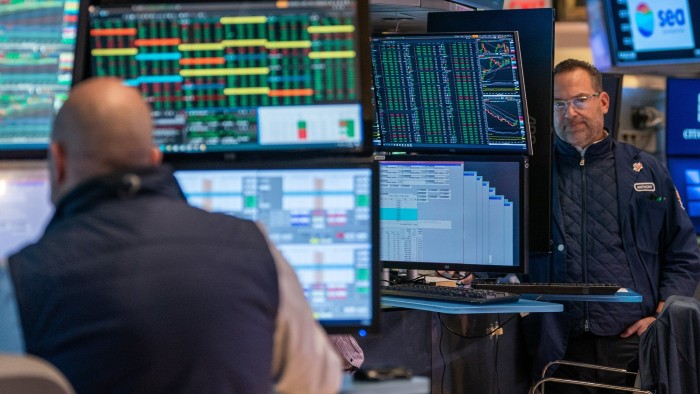Fund managers are bullish on the outlook for US high-yield corporate bonds, despite a lengthy rally — and some believe they could get a further boost from new US President Donald Trump, even as parts of the market look overheated.
The so-called ‘spread’, or premium over US Treasuries, offered by high-yield or junk-rated bonds has fallen from nearly 6 percentage points in July 2022 to about 2.6 percentage points this month, according to data from Ice. And the narrowing has been driven by investors clamouring for yield.
That leaves spreads well below the long-term average of 5.26 percentage points, according to Bank of America calculations based on Ice data, and close to levels seen in 2007 — shortly before the global financial crisis.
This rally in high-yield bonds has been supported by a buoyant US economy, low default rates, investor appetite for riskier assets, and a shortage of new issuance. Many fund managers say that, while spreads may appear tight by historical standards, they are largely justified by the strong fundamentals and technicals of the market.
“I don’t see anything causing spreads to widen [significantly], barring [a big shock such as Covid],” says Cathy Braganza, senior portfolio manager in high-yield at Insight Investment. “I don’t think we’re being fair on ourselves saying spreads are so tight. In the generic high-yield market, I don’t think spreads are that tight.”
She points to a gradual improvement in the average credit quality of companies in the high-yield universe. This, she says, has been driven by junk-rated bond issuers using debt to grow, which has often resulted in bigger, less risky companies. In the investment-grade bond market, by contrast, companies have used debt to buy back equity rather than grow, she points out.
Investor interest, meanwhile, has shown little sign of easing up.
“Every new issue [if it’s at the right price] is met with tonnes of demand; there seems to be an insatiable demand for spread and yield,” says Peter Schwab, a senior portfolio manager at Impax Asset Management.
“It’s been very hard to fight the trend towards lower spreads. Things look good — we don’t think there’s any reason to be concerned about spreads being tight,” he adds, although he acknowledges that a fall in GDP could push spreads wider.
He cites the health of the US stock market as “the most important factor” for the junk bond market, given they are risky assets. The S&P 500 index has recovered the ground it has lost in recent weeks and is at about its all-time high.
Debt defaults, meanwhile, have been low in the wake of the coronavirus pandemic. Fitch expects them to tick up to 2.5 to 3 per cent, compared with a rate of 2 per cent over the past 12 months. However, most managers do not expect a significant rise.
“For 2025, we do not expect a marked pick-up in defaults as fundamentals are generally sound,” explains Michael Krautzberger, chief investment officer for fixed income at Allianz Global Investors.
Investors have been further encouraged by the return of Trump to the White House, believing his tax policies will help corporate profitability and deregulation could boost merger and acquisition activity — which would give the stock market further legs. Similarly, Trump’s threat of trade tariffs could reduce competition for some US companies — although, so far, the president’s stance on tariffs has been softer than many expected.
Insight’s Braganza says she had shifted her portfolio from about two-thirds Europe and one-third US to about 55 per cent in Europe and 45 per cent in the US.
“Generally, everything this [incoming] administration intends to do should be market positive,” she argues. There are “single names that will really benefit from Donald Trump’s policies — tariffs, tax incentives. We’re already starting to see M&A pick up in the US. That will really benefit high-yield,” she adds.
Nevertheless, amid this bullish mood, managers see reasons for caution in some parts of the market.
The rally of the past couple of years has compressed the gap in borrowing costs between BB-rated issuers — the highest rung of the US junk bond market — and those rated CCC and lower — the lowest rungs — from 8.6 percentage points at the end of 2022 to about 5.3 percentage points this month, as lower-quality bonds’ prices have rallied.
“It’s a constructive environment for high-yield, despite the tight spreads,” says Mitch Reznick, group head of fixed income in London at Federated Hermes. “The main concern for us is complacency. We’ve seen a lot of spread compression between higher and lower quality [names]. It makes sense to us to move to higher quality,” he reckons.
AllianzGI’s Krautzberger says he has reduced exposure to Europe on valuation grounds, and has gradually been moving to higher quality credits.
Meanwhile, Matthew Morgan, head of fixed income at Jupiter, points to “very, very tight” spreads. For now, he does not see a catalyst for that to change. Nevertheless, he says: “None of my high-yield managers are reaching for risk right now. Most have reduced risk.”
Read the full article here

